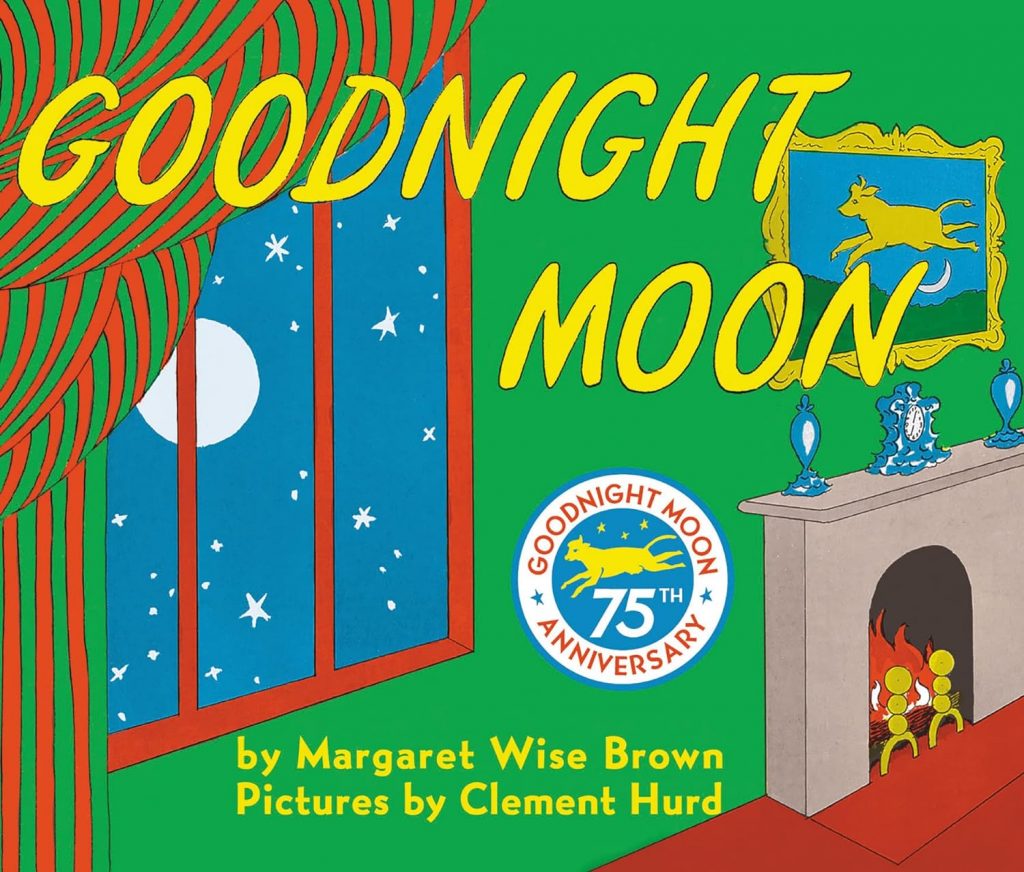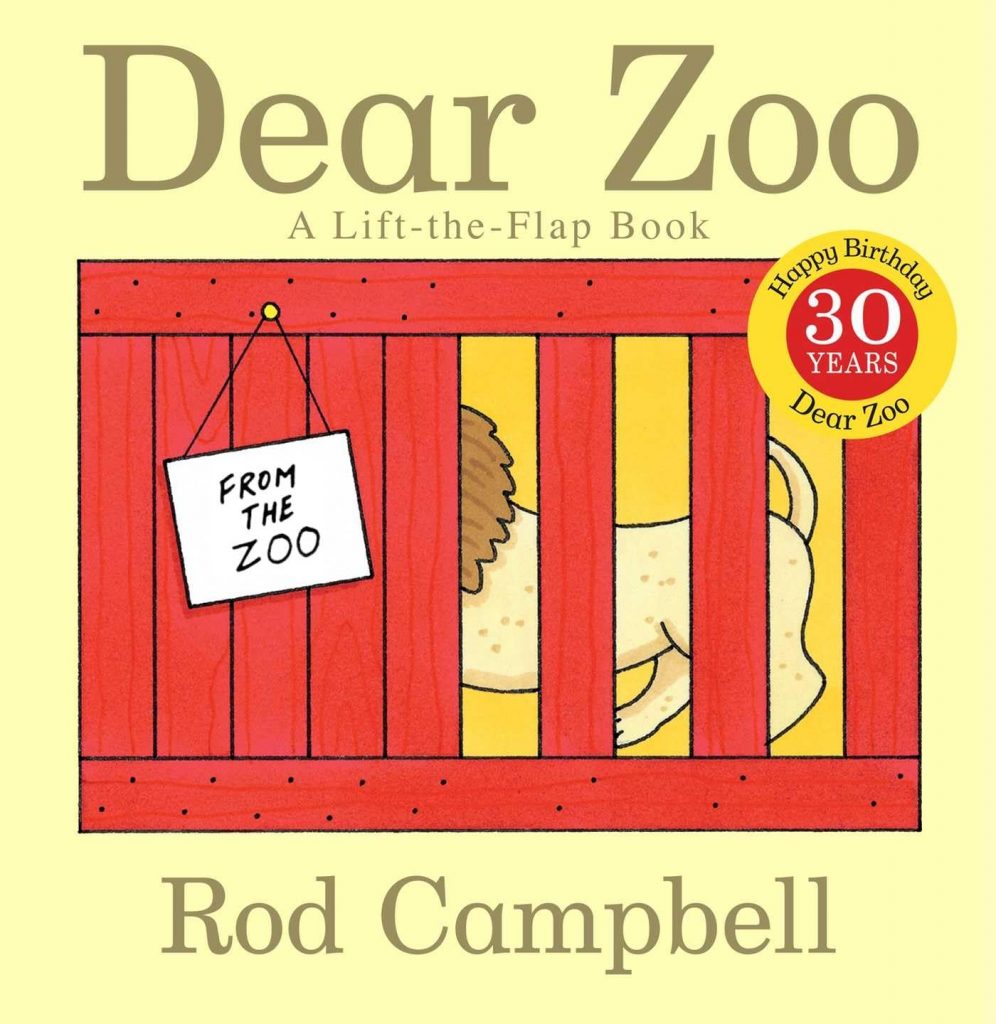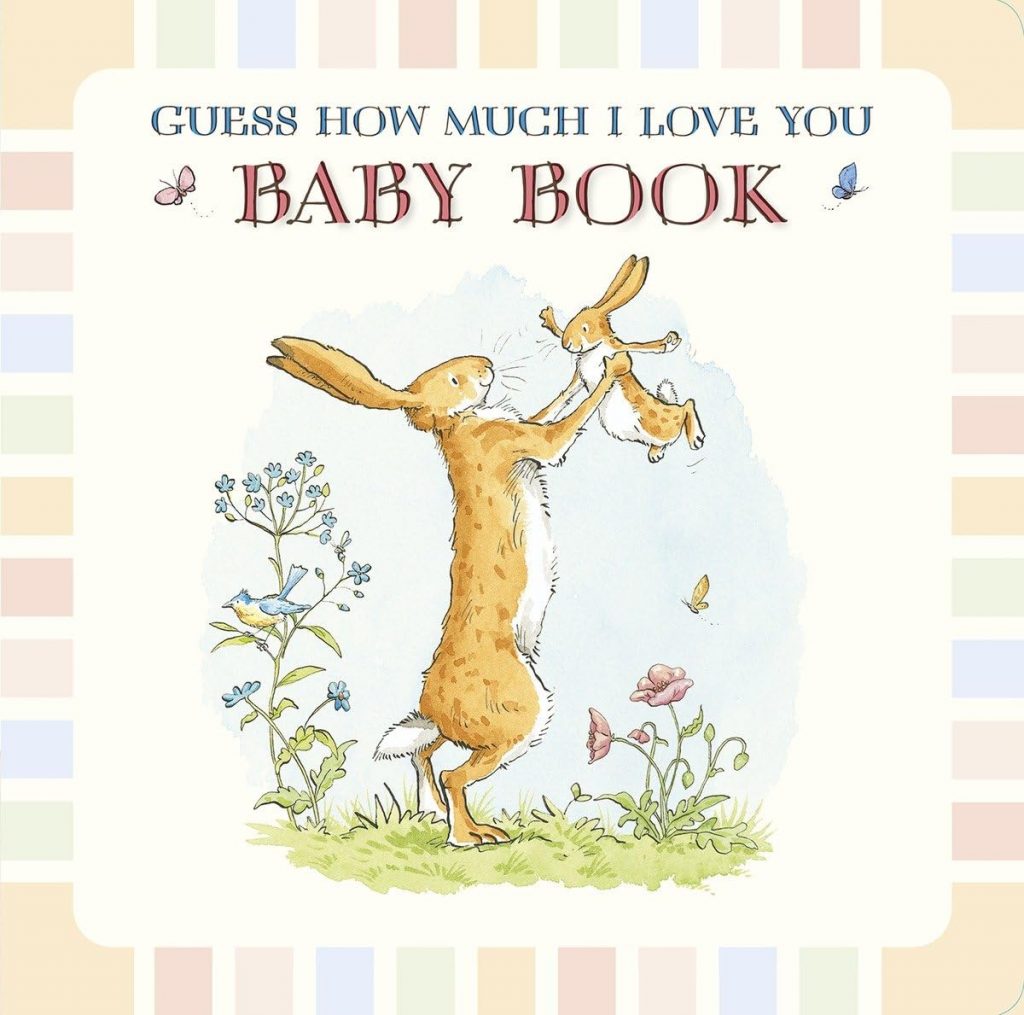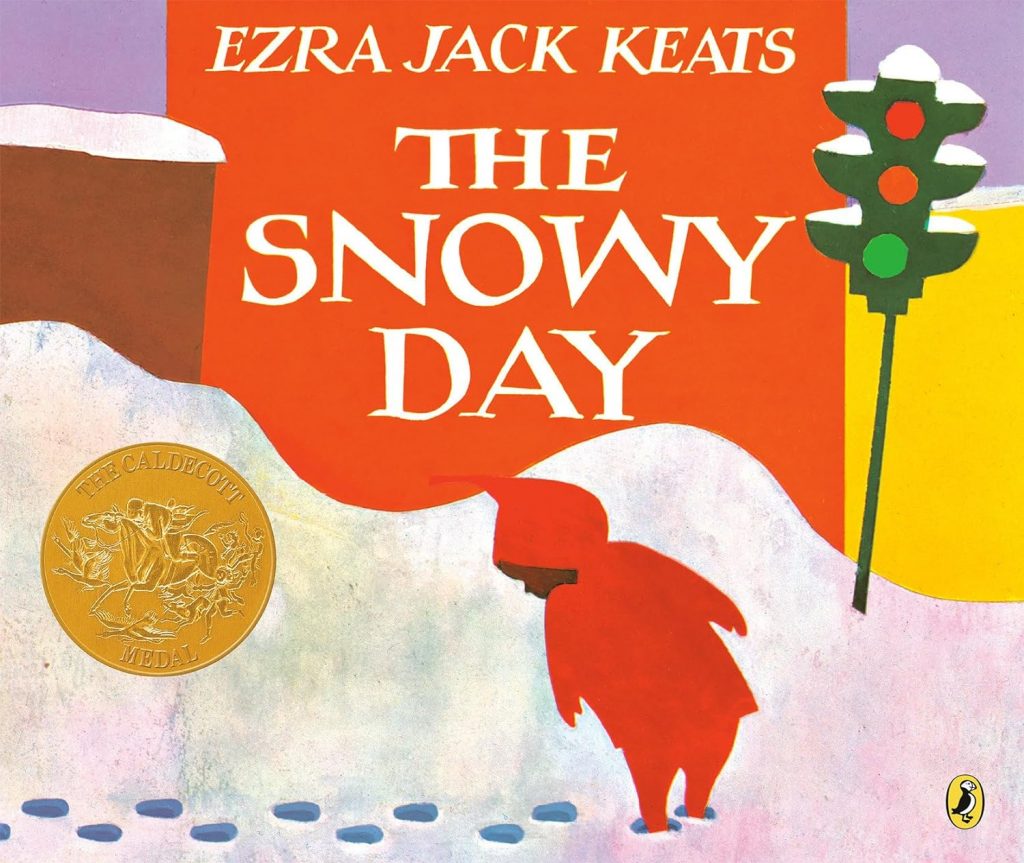Below are the top 10 books written for ages two and under. A short synopsis and why it is good reading material are offered below, along with links to buy the book.
Remember to make reading a fun and enjoyable experience, and avoid putting too much pressure on them to perform. The goal at this stage is to foster a love for books and reading, laying the foundation for future literacy skills.
“Goodnight Moon” by Margaret Wise Brown (Published 1947)

A classic bedtime story with rhythmic text and calming illustrations. It was first published in 1947 and has since become a beloved bedtime story for generations of young readers. The story follows a little rabbit saying goodnight to various objects and creatures in his room as he prepares to go to sleep. The narrative is simple and rhythmic, making it soothing and suitable for bedtime reading.
In summary, “Goodnight Moon” is an excellent teaching tool for early childhood education, supporting language development, cognitive skills, bedtime routines, sensory stimulation, social-emotional growth, and foundational literacy skills. Its enduring popularity attests to its effectiveness in engaging and educating young children.
“Brown Bear, Brown Bear, What Do You See?” by Bill Martin Jr. and Eric Carle (Published 1967)

A repetitive and colorful book that introduces various animals and colors. First published in 1967, the book has remained a staple in early childhood literature. The repetitive and predictable text structure makes it easy for young children to follow along and anticipate what comes next. This aids in language development and early literacy skills.
Its combination of repetition, color recognition, animal identification, and interactive elements makes it an ideal resource for teaching young children foundational literacy skills in a fun and engaging manner.
“The Very Hungry Caterpillar” by Eric Carle (Published 1969)

A beloved story about a caterpillar’s journey to becoming a beautiful butterfly, featuring vibrant illustrations and die-cut pages. The book follows the journey of a small caterpillar as it eats its way through various foods over the course of a week. The narrative is simple, yet engaging, and features a clear sequence of events.
The book combines an engaging storyline with rich illustrations, incorporates educational concepts such as days of the week and counting, and provides opportunities for discussions on science, nutrition, and healthy habits. Its enduring appeal lies in its ability to entertain while simultaneously serving as a valuable educational tool for young children.
“Dear Zoo” by Rod Campbell (Published 1982)

A lift-the-flap book that engages young readers in discovering different animals from the zoo. Publicized in 1982, The story begins with a child writing to the zoo to send them a pet. The zoo responds by sending a series of animals, each hidden behind a flap. The child rejects each animal until the zoo finally sends the perfect pet.
It is considered good teaching material because of its interactive format, predictive text, introduction of animals and attributes, focus on emotional intelligence, and its ability to engage young readers in an enjoyable and educational way. The book effectively combines elements that support early literacy skills, cognitive development, and sensory exploration.
“Peek-a-Who?” by Nina Laden (Published 2000)

A delightful interactive book with peek-a-boo windows and simple rhyming text. Published in 2000, it is a delightful and interactive board book that engages young readers with its playful rhyming text and surprise-filled pages.
In summary, “Peek-a-who?” has an interactive format, rhythmic and rhyming text, surprise elements and visual appeal, It also ability supports language development, fine motor skills, and early literacy skills in young children. The book effectively combines entertainment with educational features, making it a valuable resource for early childhood learning.
“Where Is Baby’s Belly Button?” by Karen Katz (Published 2000)

A touch-and-feel book that encourages interaction as children explore different parts of the body. The book is a sturdy board book, suitable for young hands, with lift-the-flap elements that reveal various body parts.
“Where Is Baby’s Belly Button?” is considered good teaching material due to its interactive and tactile design, focus on body part recognition, repetition, and colorful illustrations. The book engages young children in a multisensory learning experience while promoting language development, fine motor skills, and emotional connection during shared reading moments.
“Ten Little Fingers and Ten Little Toes” by Mem Fox and Helen Oxenbury (Published 2008)

Published in 2008, it is a heartwarming book celebrating the uniqueness of babies around the world.
The book serves as a valuable resource for promoting inclusivity and celebrating the shared experiences of children worldwide. It also has rhyming text, counting elements, cultural diversity, simple and expressive illustrations. It has real potential to support social, emotional, and cognitive development in young children.
“Guess How Much I Love You” by Sam McBratney (Published 1994)

A sweet story about expressing love with beautiful illustrations. A classic children’s picture book publicized in 1994, it is a story that celebrates the boundless love between a parent and a child.
Its poignant storytelling, expressive language, charming illustrations, and universal themes of love and affection, the book leaves a lasting impression. It is for readers of all ages and is often considered a classic in the realm of children’s literature.
“Baby Faces” by DK (Published 2016)

This is a board book featuring photographs of babies displaying various facial expressions. The book showcases a diverse range of infants, capturing genuine facial expressions, emotions, and reactions. The authenticity of the images adds a relatable and engaging quality.
It is considered good teaching material due to its authentic photographic content, emphasis on emotional literacy, visual stimulation, interactive learning potential, multicultural representation, and its contribution to early language development and social-emotional skills in young children. The book provides a valuable resource for caregivers, parents, and educators working with infants and toddlers.
“The Snowy Day” by Ezra Jack Keats (Published 1962)

“The Snowy Day” by Ezra Jack Keats is a classic children’s book that follows the adventures of a young boy named Peter as he explores his neighborhood after a snowfall. Peter delights in the simple joys of playing in the snow, making snow angels, and creating snowmen. The book beautifully captures the wonder and excitement of a snowy day through its charming illustrations and relatable storyline.
The book covers themes of curiosity, exploration, and the magic of childhood. It celebrates the joy of experiencing the world through a child’s eyes and finding wonder in the seemingly ordinary moments of life. Additionally, the book touches on themes of resilience and creativity, as Peter finds ways to have fun and enjoy himself despite the challenges posed by the snow. It is a timeless story that resonates with readers of all ages, reminding us to appreciate the beauty and wonder of the world around us.
Leave a Reply